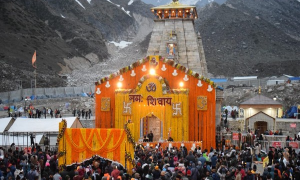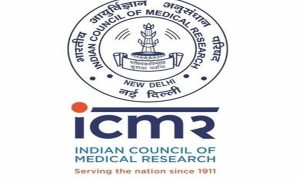“An equation means nothing to me unless it expresses a thought of God”
~ Srinivasa Ramanujan
Close to a century has passed after the death of the genius mathematician Srinivasa Ramanujan, yet even today, his achievements continue to inspire young minds. By the time he died at the mere age of 32, the genius of this self-taught mathematician gained global recognition where people drew him parallel with the greatest minds in the field of mathematics from past centuries. Commemorating his death anniversary, it is worth visiting the landmarks by the legendary mathematician whose short but spectacular life continues to evoke awe.
Commemorating Ramanujan: A genius is born
Born on December 22, 1887, in the small town of Erode in Tamil Nadu to K Srinivasa Iyengar who worked as a clerk and Komalatammal, a temple singer. As a child, Ramanujan displayed extraordinary mathematical cognition which is reflected when he exhausted college-level mathematics courses in his teenage years. His fascination for the subject reached new heights when he came across mathematician G.S Carr’s 1886 book named ‘Synopsis of Elementary Results in Pure & Applied Mathematics’ which contained nearly 6,000 theorems along with their proofs. Inspired by this, Ramanujan first verified listed theorems by Carr and eventually started developing his own theorems at home. Not only this, he took a deep dive in other mathematical concepts such as Bernoulli rational numbers, while he was still pursuing school.
At the age of 17, Ramanujan continued his further studies in a Government Arts College in Kumbakonam, which was later converted into a museum that contains archival material related to the mathematician’s personal life. Because he devoted himself to mathematics, he was unable to graduate from other courses, leading him to drop out of college. With no formal training in hand, he worked as a clerk and spent his late teens in extreme poverty but even after this, his devotion for the subject didn’t turn around and he continued independent research in mathematics.
Later in 1910, Ramanujan met the founder and secretary of the Indian Mathematical Society, V. Ramaswamy Aiyer, who further introduced Ramanujan to mathematical circles in the country.
Divine Providence of Goddess Lakshmi on Ramanujan’s Work
Ramanujan openly stated that he received mathematical inspiration and sometimes the whole formulas from the visions of Goddess Mahalakshmi of Namakkal. A devoted person, he worshiped Goddess Namagiri, the goddess of creativity and often understood mathematics and spirituality as one. He straightaway credited his 3,900 formulae to the divine providence of Goddess Mahalaxmi. Ramanujan only noted the results and summaries of his work but no proof was worked out for the formulae he came up with.
The Brilliance of Ramanujan: Work & Legacy
Encouraged by the response to his work by Indian experts and mathematicians; in 1913, Ramanujan started corresponding with Cambridge mathematician G.H. Hardy, who immediately recognized the advanced nature of Ramanujan’s work. Later, Hardy would become the man who introduced Ramanujan to global renown. Overcoming the Indian community’s taboo of foreign travel at that time, Ramanujan was convinced by mathematician J.E. Littlewood and Gilbert Walker to enrol at Trinity College in Cambridge. Here, he collaborated with other great mathematicians alongside working independently on his own research.
He made significant contributions in the field of elliptic functions, number theory, mathematical analysis, infinite series, continued fractions and theta functions. He compiled nearly 3,900 results linked to identities and equations.
At the age of 31, Ramanujan became one of the youngest members of Britain’s Royal Society, elected to the London Mathematical Society and along with this, became the first Indian Fellow of Trinity College, Cambridge University.






















 WhatsApp us
WhatsApp us
Pingback: non dairy keto diet
Pingback: gay cigarette dating